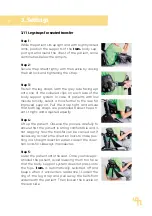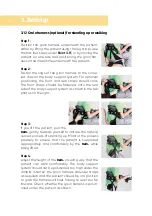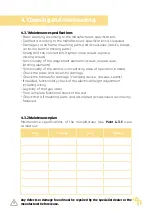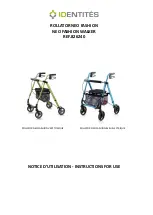
07
2. Product description.
2.2 Handling / transport
The mobility and transfer aid is not intended for carrying, since it is
equipped with castors. Should you have to carry the equipment due to
obstacles, ensure that all moving parts are tightened. Subsequently, two
persons should stand each on one side of the transfer and mobility aid,
grab the front and rear at the side frame and carry it to the desired loca-
tion. To transport the transfer aid, reduce all adjustments to their most
compact size (close leg expander, etc.)
2.3 Application areas, use according to the intended purpose
The
tram.
transfer and mobility aid is a medical product of risk class 1 and
for indoor use. It was developed for the safety, comfort and at the same
time to preserve the dignity of patients and accompanying persons.
tram.
can lift and move patients with different physical conditions.
2.3.1 Indication
The
tram.
transfer and mobility aid is designed for users who manifest a
significant to fully pronounced impairment of being able to change body
position and walking. This is often the result neuromuscular damage, am-
putation of one of the lower extremities / of the lower extremities or with
neurological disorders.
2.3.2 Contraindications
In general, the indications for walking and standing should be approved
by a doctor or orthopaedist. Therefore, before using the
tram.
it should be
checked if there are any contraindications from the patient's side. In gene-
ral, any type of pain represents a contraindication.
Caution!
Depending on the disease symptoms and therapy, please clarify
how long the user may stand in the transfer and mobility aid. The following
symptoms may occur in some cases:
• Circulation problems
• Pain in the leg and back areas
• Spastic seizures
It must also be clarified whether the user can be brought into full standing
position. For many users, only standing in a bent position is possible.


































